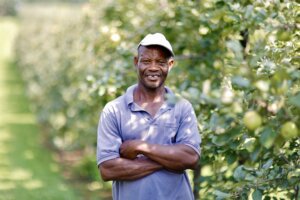
Seasonal, migrant or guest workers have long been part of the global labour force as countries who struggle to fill vacant jobs open their doors to people from abroad who are looking for work they can’t get in their home countries.
In Europe’s post-war boom, for example, guest workers came from Italy, Greece, Spain, Portugal and later also Turkey to work in then-West Germany, the Netherlands, Belgium and Scandinavia.
Canada welcomed its first seasonal workers in 1966 when 264 Jamaicans came to Ontario to help with apple harvest, laying the foundation for the Seasonal Agricultural Worker Program (SAWP). Through SAWP, Canada annually welcomes more than 30,000 workers from Mexico, Jamaica, Trinidad & Tobago, Barbados and the Eastern Caribbean Islands to jobs in the horticulture sector.
Many thousands more workers come through the Agricultural Stream of the federal Temporary Foreign Worker (TFW) program.
Last year, the Canadian government began overhauling its temporary foreign worker programs serving Canada’s agriculture industry to roll them into a single new national program that would also serve the seafood processing industry.
The Ontario Fruit and Vegetable Growers Association (OFVGA) has been participating in the consultation process around the redesign and providing feedback to help ensure workers and employers don’t lose valuable aspects of SAWP in the new program. This includes SAWP’s worker mobility provisions, and its collaborative processes which often see the employer, the worker(s) and the liaison or consular staff from the workers’ home country work directly with one another to resolve workplace issues or to find new job opportunities for the worker if necessary.
“It’s important for the industry to take an active role in the consultations around developing this new program. Employers, workers and the workers’ home countries have nearly 60 years of experience with SAWP, and we want to make sure its benefits and learnings are not lost or become collateral damage during the development of the new program,” says Bill George, chair of the OFVGA’s labour committee.
Since its inception, SAWP has continuously evolved to meet the needs of workers, employers and the governments of both Canada and the workers’ home countries. Money that workers send home, called remittances, is an important revenue stream for those economies.
This unique collaborative approach continues to this day as regular virtual and in-person meetings with representatives from workers’ home countries, the Canadian government and the farming community ensure the program continues to provide benefits to everyone involved.
It’s part of what has made SAWP a valuable asset for the countries who send workers to Canada. Caribbean nations, for example, are actively vying for Canadian farm employers to choose workers from their countries to fill their open jobs.
“This program is reducing unemployment, boosting remittances and boosting resilience. We help people make a better life; we are building better communities,” said Olaf Fontenelle, head of the Eastern Caribbean Liaison Service during a presentation at the Ontario Fruit and Vegetable Convention.
Jamaica’s minister of labour, Pearnel Charles Jr., has visited Ontario a couple of times in recent years to meet with employers, workers and government officials, highlighting the importance of this program to his country’s economy and labour market.
To qualify for the program, workers must be able to read and write and have completed high school, meaning jobs in Canada don’t just help address Jamaica’s unemployment problem, they’re also an incentive to keep young people in school.
It’s a competitive process for workers to get on the program. They must apply from their home and are vetted by their own government before being accepted, which means they can then sign a legal, government-audited employment contract.
“I was working in landscaping in Jamaica and a member of the Ministry of Labour came by and introduced me to the program,” recalled Adam Arboine from Jamaica. “When I first found out I got into the program, I was so happy. I had been waiting for so long for that call.”

For many workers like Arboine, a farm job in Ontario is a game changer, and they’ve been sharing their stories through the More than a Migrant Worker initiative of being able to pay for education and invest in businesses and communities back home. They speak proudly of their kids who are now doctors, lawyers, nurses or teachers thanks to their farm job in Canada.
Phillip Robinson is a coffee grower in the Blue Mountain area of Jamaica who has been coming to Canada every year since 1998, spending the last 20 years on the same farm in Norfolk County.
“Back home, I have my wife Vivia. We have four children…our son is now a math teacher in the United States. My oldest daughter went to university and is now a public health inspector for the last year. That is a good job,” he said.
This story was provided by the Ontario Fruit & Vegetable Growers’ Association.

